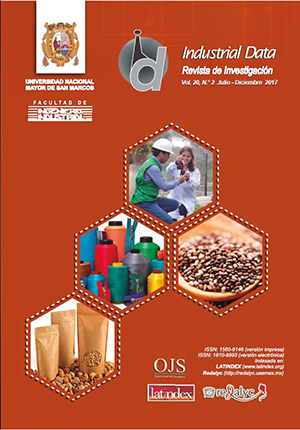USE OF LIGNO-CELLULOSE RESIDUES IN THE ELABORATION OF ECOLOGICAL SECONDARY PACKAGES
DOI:
https://doi.org/10.15381/idata.v20i2.13959Keywords:
Lignocellulosic material, fibers, secondary packagingAbstract
The present study proposes an alternative to the use of petroleum materials and vegetal lignocellulosic forest materials to manufacture of secondary packages. Boxes were made with fibers obtained from banana and coconut, agglutinated with rice. Firstly, it was evaluate the amount of water soluble solids was evaluated in the stream, a characteristic that showed significant differences, and of starch, where there were no statistical differences. Subsequently, agglomerates of the rice variety INIAP 15 and the vegetal fibers were elaborated in two different percentages of composition for each type of fiber. Where there were evaluate of density, tension and resistance. Coconut-fiber and banana-based agglomerates reached the highest values in the three physical characteristics evaluated, unlike the agglomerate made from sugarcane, which was eventually discarded as an alternative material in the manufacture of boxes.Downloads
Downloads
Published
Issue
Section
License
Copyright (c) 2017 Evelin Tamayo Gutiérrez, Oscar Sarasty Miranda, Elizabeth Mosquera Quelal

This work is licensed under a Creative Commons Attribution-NonCommercial-ShareAlike 4.0 International License.
AUTHORS RETAIN THEIR RIGHTS:
a. Authors retain their trade mark rights and patent, and also on any process or procedure described in the article.
b. Authors retain their right to share, copy, distribute, perform and publicly communicate their article (eg, to place their article in an institutional repository or publish it in a book), with an acknowledgment of its initial publication in the INDUSTRIAL DATA.
c. Authors retain theirs right to make a subsequent publication of their work, to use the article or any part thereof (eg a compilation of his papers, lecture notes, thesis, or a book), always indicating the source of publication (the originator of the work, journal, volume, number and date).






